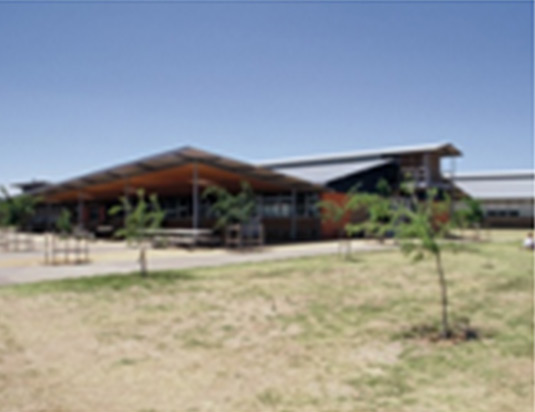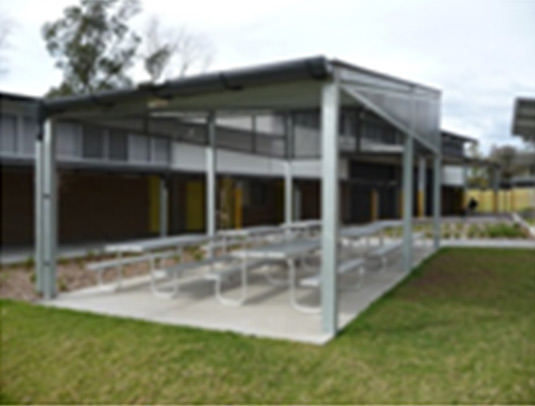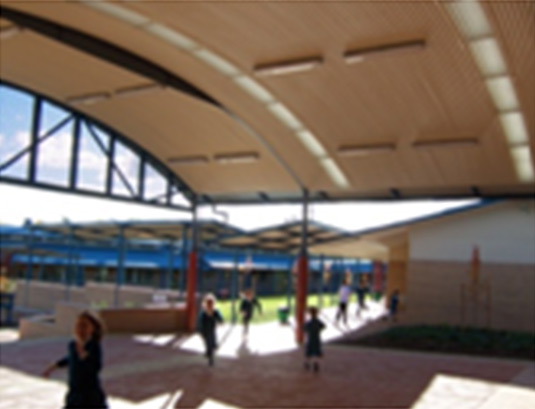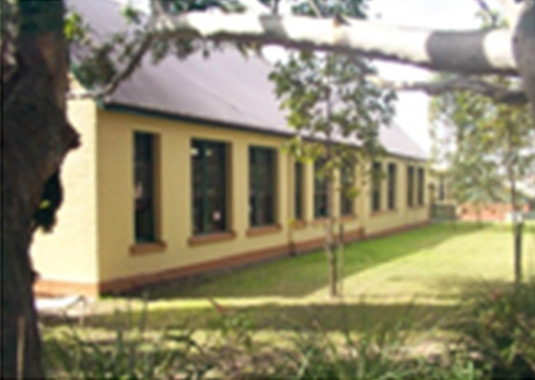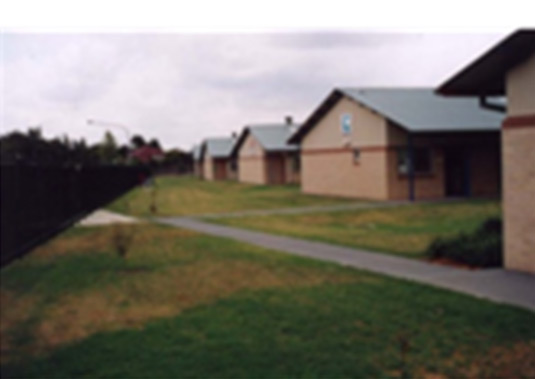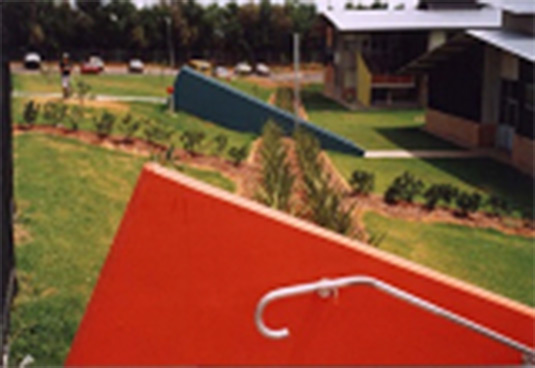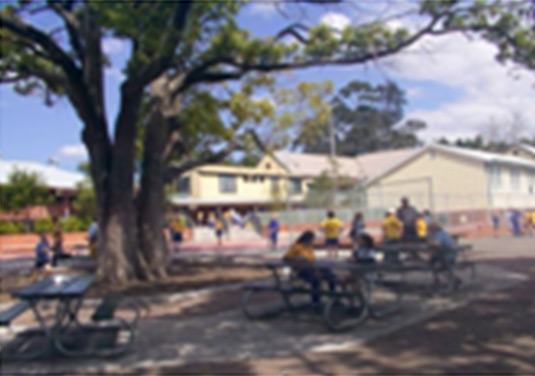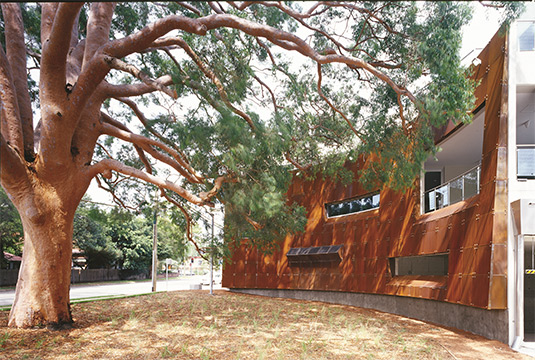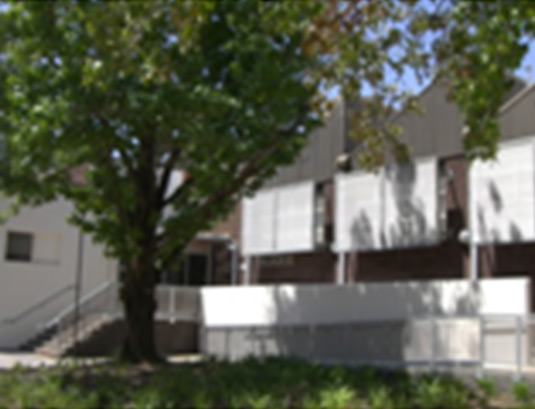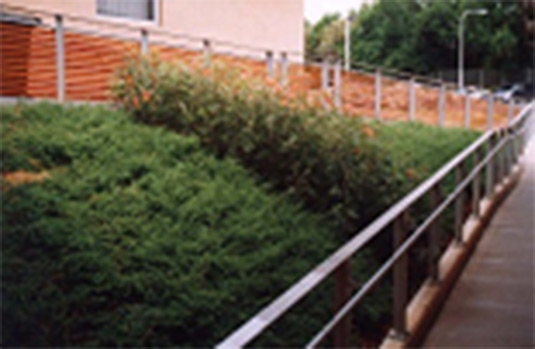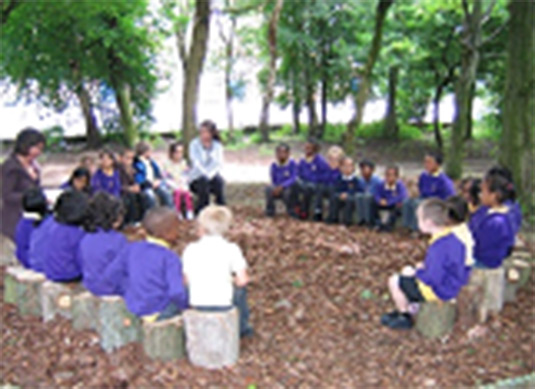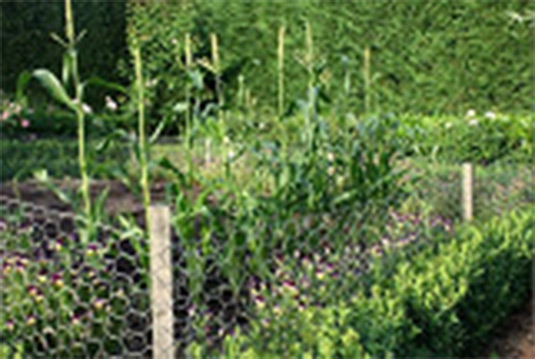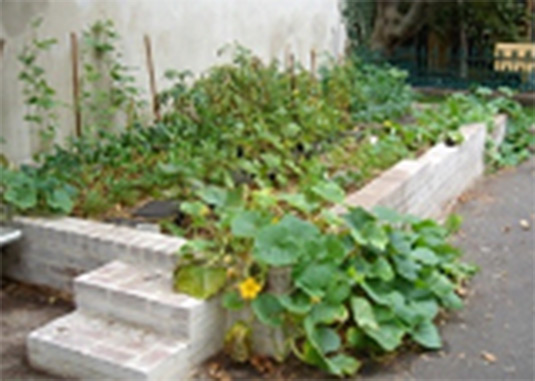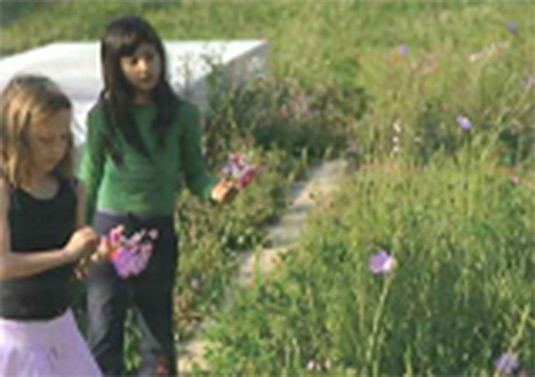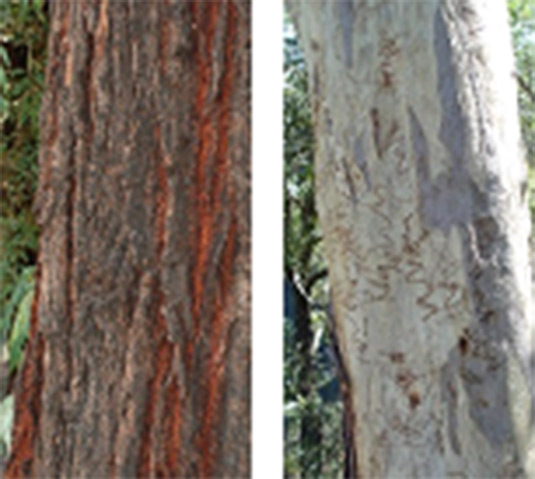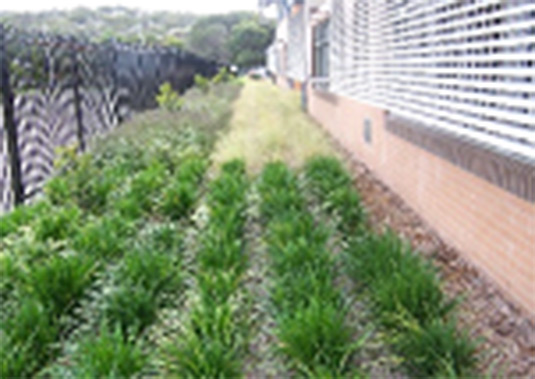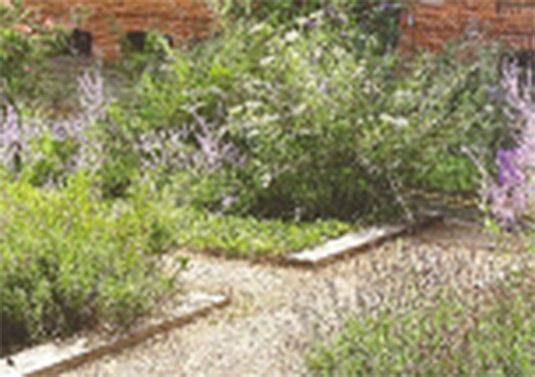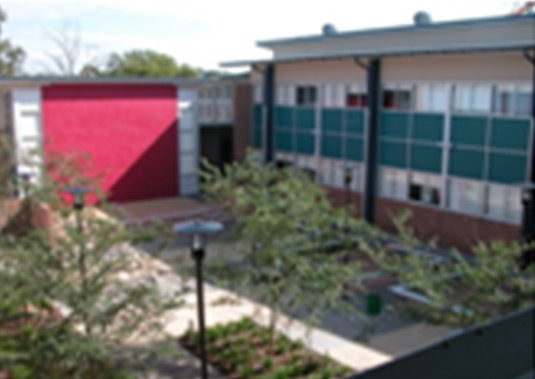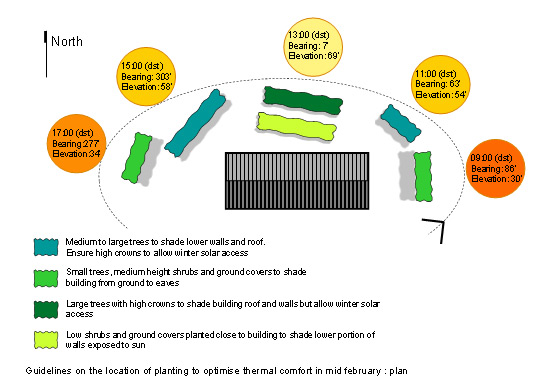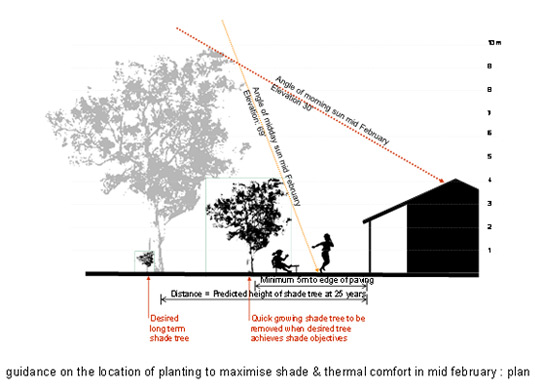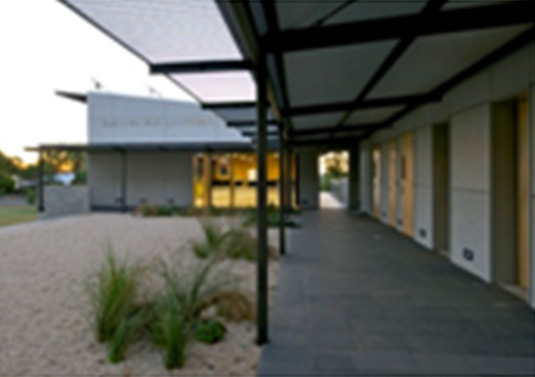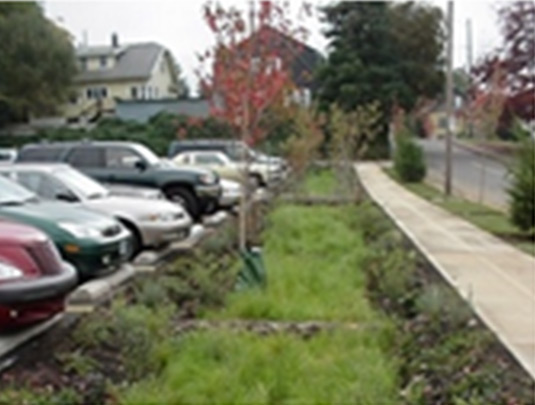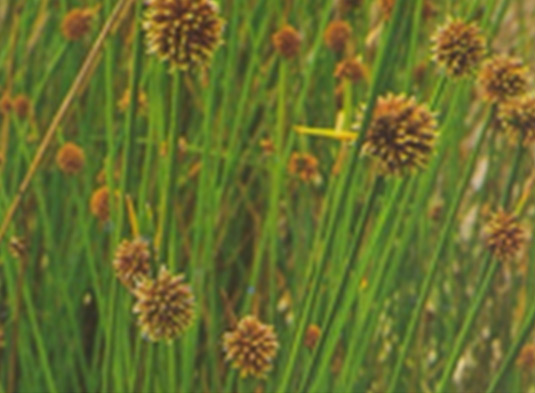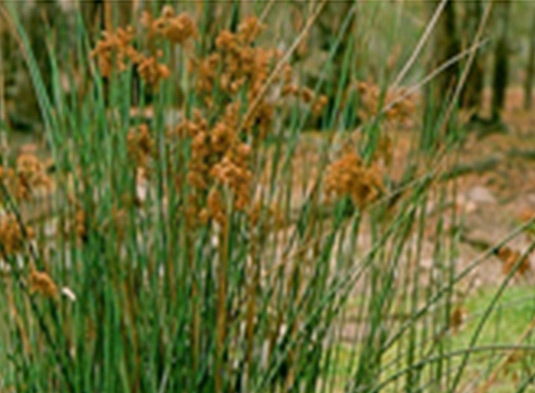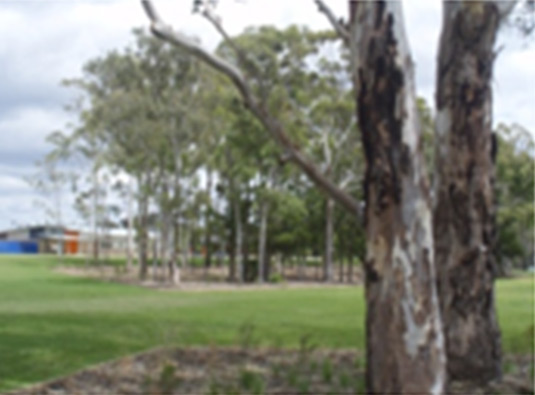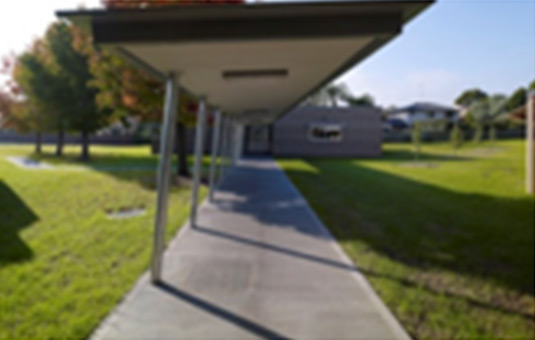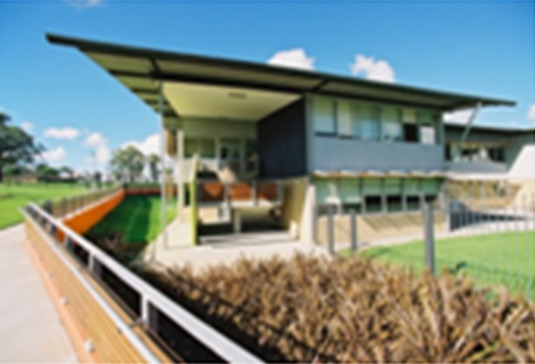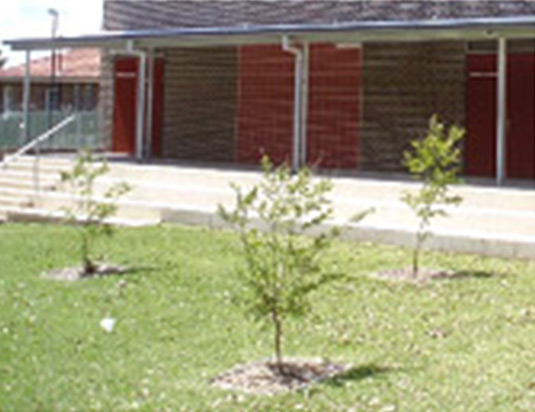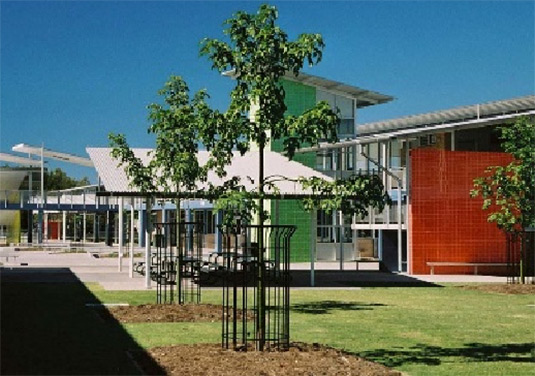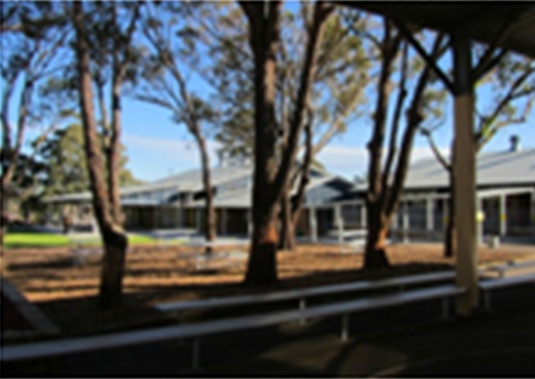
Landscape Design

|
Landscape Planning and Design encompasses all elements in a development proposal, including:- ground works, buildings, roadworks, and services as well as drainage, erosion control, surface finishes and planting, to provide a rational solution to site specific factors, to facilitate site development and management. Detailed landscape design involves fine resolution of hard and soft elements.
Detailed design development of other hard works such as bulk earthworks, retaining walls higher than 1.0 metres, vehicular pavements or site services are to be undertaken by appropriate professions such as Civil and Structural Engineers in co-ordination with the Landscape Architect. The information contained in this Document is intended to provide guidance for the design of school landscape in New South Wales. The school landscape has unique requirements that must be addressed at the design stage. The external environment of the school should form a beneficial, long-term asset to the school community, and potentially to the wider community. This document aims to increase understanding of the issues affecting the design of the school landscape and suggests possible ways to resolve them. The information provides opportunities to maximise the potential of the school landscape for not only environmental benefit but for student learning, and community engagement. This guide applies to every school development in NSW, whether refurbishment or a new facility, and to all stages of the development of a new facility including; initial planning, concept design; detailed design, documentation, construction and maintenance. This landscape section contains: Design principles: Principles to be addressed in the design process and strategies for their implementation. Zone Data Sheets: Schools are divided into zones with specific needs that must be addressed at the design stage. Each zone has a data sheet with key requirements and recommendations.
School Plant Palette: A list of suitable species for school landscapes. |

An attractive and safe landscape projects a postiive image of a school and encourages parents, students and the community to have pride and interest in their school, and to have a strong sense of ownership and community.
Spatial Definition
The landscape can be used to define spaces and activities such as areas of movement, play and out of bounds areas. The landscape treatment reflects the areas’ use and assists in guiding the use and behaviour patterns of students.
Climate Control
Appropriate landscape treatment contributes to a comfortable micro-climate both within buildings and in external areas. Examples include: shading of building facades, external shade, and wind break planting.
Social Benefits
The landscape design, in particular planting, can have a positive psychological effect on the behaviour of students. The landscape can support a variety of activities by providing a range of settings that allow students to engage and interact with each other.
Learning
The landscape can add to, and support the school curriculum, by integrating with outdoor learning spaces and facilities, to reflect an increasing acceptance of the benefits of outdoor learning including developed imagination and social interaction, opportunity for expanded environmental knowledge and engagement, team building, planning, play and fun.

The Educational Facilities Standards & Guidelines contain detailed descriptions of the requirements for all spaces in schools, which all have an impact on the planning and organisation of the site. Familiarity with their general contents is essential to the Landscape Architect.
Incidental Items and Fixtures include:
Flagpoles, signs, seating and fencing as well as drinking fountains. Additional non-standard fixtures may need to be incorporated such as play structures, bell, bicycle rack/rails and cricket nets.
Refer to EFSG DG / LANDSCAPE FIXTURES
Service elements which may affect site landscape planning include gas meters, regulators or bulk storage, Power (electrical kiosk); septic tank and transpiration/absorption area (non-sewered areas); water meter, fire booster assemblies and hydrants; site lighting/security lighting; telephone and stormwater infrastructure.
Planting elements include retained vegetation, grassed areas, trees in grass, trees in paved areas and mass planting.
Demountable learning facilities may be required to carry peak enrolment.
Site facilities in Schools generally comprise:
- Assembly Area
- Games Court for PE and other activities
- Games/ Playing
- Batting Practice Nets
- Ancillary Paved Pedestrian Areas (access, paved areas and bus zone).
- Agricultural Field Area (High School)
- Open Space
Pedestrian access paths, ramps, steps, covered ways are required by:
Refer to DG / SITE FACTORS / CIRCULATION
Vehicular Circulation is required to:
Refer to DG / SITE FACTORS / CIRCULATION

The following section outlines design principles that apply to every school, and in every zone of the school.
Design principles are grouped under four headings:
- A healthy and safe landscape
- A sense of place
- A sustainable landscape
- A low maintenance landscape
In all instances, the design principles need to be balanced with other design requirements including the site-specific brief, stakeholder and authority requirements and budgetary constraints.

90.05.01 Safe Materials
Aims
- Create a safe school environment using materials that will not cause harm to students, teachers or visitors.
Safety and security are key considerations for the school landscape. The principles of safe design must be carried through all aspects of the design development.
Areas addressed in this section include:
- Safe materials
- Security
- Shade
- Safe and equal access
- Harmful or irritant plants
- Bushfire management
- Health
Strategies
- All products used in the school landscape must be safe. Particular consideration must be given to the specific end user groups. Further consideration must be given to construction/installation processes, in terms of their potential for exposure to unsafe products, particularly on occupied premises (works at existing schools).
- All products must be tested and certified to ensure that they comply with relevant Australian Standards and applicable health and safety guidelines.
- Refer to the relevant Australian Standards, Kidsafe, and/or the National Industrial Chemicals Notification and Assessment Scheme for futher information.
90.05.02 Security
Aims
- Maximise safety and security and facilitate surveillance of students by maintaining sight lines and minimising opportunities for hiding.
- Consider the safety and security of the school grounds when locating planting to screen, expose or filter views.
- Consider planting locations in relation to security lighting and after hours use areas.
Strategies
Understand and address the requirements of the school and local council, in relation to visual access (sight lines) and privacy. This may include openness for supervision, screening for privacy, aesthetics or safety, restricted access and physical screening. Views into the site from nearby residential properties and roads may be desirable to allow informal neighbourhood supervision. Choose appropriate plant species to fulfil requirements.
90.05.03 Shade
Aims
- Exposure to UV rays is a principal cause of skin damage and longer term adverse health impacts. Immature skin is particularly vulnerable to damage. Provision of adequate shade in the school landscape is therefore paramount.
- Provide adequate areas of shade where students can eat, play and work outside while being protected from the sun's harmful rays. Especially provide summer shade to seating and eating areas.
90.08shade1.jpg

Existing mature trees provide a shady spot to sit. (Illawarra and South East Region)
Strategies
- Locate trees and planting to provide shade for classrooms and staff areas. Afternoon shade in the summer months is particularly vital.
A combination of an archtiectrual shade structure and tree planting (once mature) provides shade. (Western NSW Region)
- Design the external environment so that at least 50% of seating is shaded by trees or building elements.
- Choose tree species that are effective in providing shade, such as broad dense canopy trees. Ensure that appropriate trees are selected to suit the particular conditions including high pedestrian traffic (root compaction), location in pavements and the like. Refer to the School Plant Palette for examples of appropriate species.
- Ensure that a degree of shade is provided in external areas throughout the year, especially in hot or dry climates.
- Consider the growth rate and size of trees when planting for shade including the potential need for interim design solutions such as shade sails or structures.
An architectural structure provides shade for seating. (Hunter/ Central Coast Region)
- Select appropriate species and locations for shade trees, to minimise the potential for damage to pavements, structures and buildings by the root system. Use structural soil to increase the volume of soil available for tree growth and root control barriers where appropriate to protect adjoining pavements.
Where applicable, ensure solar panels are not obscured by plants as they mature. - Provide architectural shade (shade structures, covered areas, verandas, as per the respective Educational Facilities Standards & Guidelines and the project brief) to cater for shade requirements in new schools. This will provide instant shade while trees mature.
- Refer to organisations such as Kidsafe, Australian Standards and the Cancer Coucil for relevant recommendations and guidelines regarding the provision of shade.
The COLA provides shelter in this school. (Riverina Region)
90.05.04 Safe and Equal Access
Aims
- Provide safe access to all key facilities including outdoor (learning and main play) spaces for people of all abilities.
Strategies
- Provide equal access to all key facilities within the school grounds. Refer to the Building Regulations (BCA) and Access sections of this Design Guide.
90.05.05 Harmful or irritant plants
Aims
- Minimise the potential for harm arising from the selection of plant material in the school landscape.
Strategies
- Plants known to be toxic, and especially those known to be toxic in small quatities, must not be used in the school landscape.
90.05.06 Bushfire management
Aims
- A Bushfire Assessment Reoprt by an appropriately qualified consultant should be prepared for all development in bushfire prone land. The report should include a site risk assessment and have recommendations for compliance with AS 3959- building in a bushfire prone areas. Comply with the landscaping recommendations in this report. In particular landscaping should be designed to:
- Reduce fire intensity
- Reduce fire spread
- Assist in reducing wind velocities
- Filter and deflect embers
- Reduce impact of radiant heat
Strategies
- Plants known to be toxic, and espec
Refer to DG / BUSHFIRE PROTECTION
90.05.07 Health
Aims
- Design the school landscape to support the healthy development of children through the provision of spaces that encourage physical activity and social interaction.
Strategies
- Provide play areas which facilitate opportunities to develop fine and gross motor skills, and encourage students to be physically active.
- Where the provision of play equipment is included in the landscape brief, ensure play equipment and facilities are varied and appropriate to age and abilities, offering an appropriate physical and learning challenge.
- Where fixed play equipment is provided, a variety of equipment should be considered in order to meet the needs of different age groups (such as K-2, Y3-6, Y7-9, Y10-12). This will reduce the potential for conflict between different age groups, and avoid the potential for frustration with equipment that challenges too little or too much, which may lead to disruptive or destructive behaviour.
- Play equipment should be chosen and designed in accordance with relevant Australian Standards (AS4685 and AS4422), EFSG Design Principles and ‘Playing Safe: Guidelines for the installation and maintenance of playground equipment in NSW government schools’, published by the NSW Department of Education.

This section provides the design principles to guide the creation of a sense of place within the school environment.
Specific areas addressed by the principles are:
- The local context
- Landscape character
- The educational landscape
1. Local Context
Aims
- Integrate with the landscape and architectural context so that the school becomes part of the community.
- Contribute to the street character and amenity.
- Provide definition to a variety of inviting and usable spaces.
Strategies
- Where possible, provide street tree planting that continues the street planting theme, to achieve a consistent outcome along the street. Provide a unique identity for the school by using distinct mix of plant species that complement the school surrounds. Refer to the School Plant Palette for suggested species and also to the local Council to determine if a street tree master plan is in place to ensure continuity to surrounding streets.
The landscape design is complimentary to the architectural context of the site.
- Anchor the school in its built environment context by referencing local plants, building materials, rhythms, textures and colours in the landscape design.
- Consult with the Architect and design team to achieve cohesive landscape spaces between buildings and siting of buildings to respect existing landscapes.
The orientation of buildings and the lack of landscape treatment result in a poor street address for this school.
2. Landscape Character
Aims
- Integrate existing established vegetation into the landscape design as a means to enhance the visual character and amenity of the school.
- Provide a distinctive and attractive environment. The repetitive nature of school architecture can lead to a level of homogeneity irrespective of location. The landscape provides an opportunity to individualise schools and provide a memorable landscape setting.
- As much as practical, retain existing trees and habitat, for inclusion in the school landscape. They are key elements to a specific local character and provide important shade to external areas.
An example of a site-specific solution to stairs and handrails. Bold colours and distinctive forms provide a unique identity. (South Western Sydney Region)
Strategies
- Retain and protect existing trees. They are landmarks and often provide gathering points within the school. They also help reduce the perceived scale of new buildings.
This tree is a landmark feature within the playground and provides shade and a focus for gathering.
- Avoid disturbance to and construction within the root zone of existing retained trees. The root zone generally extends beyond the drip line of the crown. Disturbance to the root system can be caused by compaction due to stockpiling materials, parking of vehicles, cutting or exposure of roots and changes in ground level, including placement of fill in excess of 100mm. Refer to AS 4970-2009 Protection of Trees on Development Sites.
This building responds to the existing Smooth-barked Apple (Angophora costata). (Chatswood Police Station)
- When work in the vicinity of an existing tree cannot be avoided, an arborist will need to be engaged to provide expert advice on how to best manage the tree (throughout the construction and in the long term), to ensure long-term tree health and viability, as well as student safety. This includes an assessment of possible changes to their environment (soil levels, water table and root disturbance). Reports produced by the Arborist must be provided to the contractor and be kept on site throughout the construction as a reference document.
- Implement a regular program of tree management and maintenance practices based on the advice of the Arborist..Where disturbance to the root zone cannot be avoided altogether, seek advice from the Arborist as to what works can be undertaken within the Structural Root Zone. As a guide the Structural Root Zone can be measured as (SRZ = 5 x DBH (Diameter of trunk at Breast Height)). Avoid earthworks within the Tree Protection Zone (TPZ = 10 x DBH) surrounding retained trees, unless recommended otherwise by the site arborist.
New buildings and structures in this school have worked around existing trees to take advantage of the amenity it provides. (TAFE, Western NSW)
- Use advanced specimens selectively for aesthetics and early effect. This will need to be balanced with budgets and potential longer establishment periods.
- Use smaller stock in areas that do not require an instant landscape. Young, small plants generally establish quickly and are more likely to thrive. They more readily adapt to local conditions and grow quickly to result in a healthy, vigorous landscape.
Dense planting stabilises this embankment, minimises weed invasion and provides an attractive interface.
- Investigate planting types, sizes and techniques that support the successful establishment of the school landscape for example protective fencing and surrounds to avoid damage from students and pests such as rabbits.
- Identify opportunities for custom solutions to site specific issues, to distinguish the school from other schools.
- Give preference to endemic (locally native) species or use other native or exotic species that suit the local climatic and rainfall conditions, as well as the specific site conditions.
3. Educational Landscape
Aims
- Provide curriculum opportunities for education through the creation of appropriate spaces for outdoor learning.
Outdoor classroom (Manchester)
- Provide a landscape that is stimulating and provides aesthetic benefits and enjoyment for the senses: sight, sound, touch and smell.
Native gardens planted around gathering spaces. (South Western Sydney Region)
- Foster an awareness of sustainable food production and positively influence the food choices of students.
- Provide opportunities to learn about natural systems through the provision of areas for environmental education.
- Provide opportunities for play in unstructured, and unprescribed natural settings.
Strategies
- Develop the landscape design so that outdoor rooms of varying character, form and size are provided. These should facilitate formal and informal outdoor learning opportunities and be able to accommodate a variety of tasks and group or individual learning. The landscape should not be seen as purely aesthetic, but as an extension of the learning spaces that have been provided in the classroom.
- Provide kitchen, herb, fruit or vegetable gardens as an opportunity for students to connect and engage with the cycle and process of growing food. They allow students to participate in growing, harvesting and preparing of fresh food, fostering an understanding of food production as well as natural processes generally. Consider the location of gardens relative to other facilities such as kitchens, water access, tool sheds, composting areas and vehicular access.
Vegetable gardens (Branbourne Farm Kitchen Garden)
Raised vegetable garden (Sydney Region)
- Set aside areas for environmental education. These could be either existing areas on site, or newly established. Suitable areas include creeks/ponds/wetlands, groves of trees, embankments and rockeries. Use species, and combinations of species, that provide examples of natural systems and processes. Refer to the School Plant Palette via Related Resources for plant species that are suitable for attracting birds, butterflies and other wildlife.
School grounds can provide opportunities for students to learn about natural systems.
- Consider establishing a weather station with basic environmental measurements that can be regularly monitored for example temperature, rain gauge, wind direction and barometer.
- Provide opportunities for imaginative play and the chance to explore, discover and connect with nature. This can increase awareness of natural systems and the environment. Integrate natural elements such as stone boulders, fallen logs and areas of mulch, gravel or sand, to provide stimulating free play areas
School grounds can provide opportunities for imaginative nature play (Sydney Region).
- Include plants that stimulate the sense of touch through the selection of plants with varying leaf forms, bark and flower texture. An example is the contrast between the smooth trunk of Scribbly Gum - Eucalyptus haemastoma and the rough fissured bark of Red Iron Bark - Eucalyptus sideroxylon. These two tree trunks also provide contrasting colours.
Contrasting bark colour and texture
Include plants and combinations of plants that stimulate sight through contrasting colours. For example, large beds of mass planting of varying colours contrasting with the trunks of trees and the seasonal presence of large bright flowers.
- Allow for the experience of different sounds by using plants with a variety of leaf forms, and attract a variety of birds. Tree foliage can have distinctive sound effects in the wind e.g. Casuarina. Consider providing complementary elements such as wind chimes.
- Use aromatic plants in appropriate, strategic locations to provide a range of different fragrances in the landscape. Refer to plant palette for fragrant plants.
Contrasting foliage colour and texture
- Consider the provision of sensory gardens as an opportunity to develop the senses: touch, sight, taste, smell and sound. These garden spaces also provide opportunity for a variety of surface finishes, such as gravels, rocks, timber and exposed aggregate concretes. Consider also wind chimes, mirrors and wind sculptures that will stimulate the senses. Such gardens also provide attractive passive or 'break-out' spaces for quieter children. Consider seating areas within these garden areas.
Sensory Gardens provide opportunities for developing the senses. (Kultur Garten, Berlin)

THERMAL COMFORT
- Maximise thermal comfort and energy efficiency through integerated architectural and landscape design
- Maximise thermal comfort within buildings.
Buildings can significantly over-shadow outdoor spaces in winter, but provide little shade for lunch/ recess in summer. The reverse is desirable.. (South Western Sydney)
Strategies
- In warm climates, utilise courtyards as cooling zones. Consider the use of shade structures and water.
- Locate suitable windbreak species where required to ameliorate prevailing cold winter winds.
- Select species and locate trees to allow sufficient winter solar access to buidlings and external spaces in winter.
- Consider the location of trees and planting to provide shade for classrooms and staff areas in summer months. Shade to walls and opaue surfaces can be effective in cooling classrooms as well as shade to transparent and glass surfaces.
- In particular, maximise shade and thermal comfort in mid-February as indicated in the following diagrams.
A generous veranda provides shade and rain protection while reducing heat absoprtion by the buildings. It also provides a transition zone between internal and external areas. (Western NSW)
WATER MANAGEMENT
Aims
- The school landscape should be integrated with the stormwater design.
- Incoprorate Water Sensitive Urban Design (WSUD) principles in consultation with a Civil Engineer as a part of the site wide drainage strategy.
- The school landscape should minimise additional irrigation requirements.
Bio-swales are a cost-effective and attractive means to capture, direct and filter runoff and overland flow.
Strategies
- Reduce site run-off and peak flows of water downstream through on site detention measures and by minimising impervious areas where possible. Contact local authorities for particular guidelines and requirements. Work with the Civil Engineers to meet requirements for on-site detention and investigate opportunities to increase rain/stormwater percolation into the site to recharge water tables.
- Utilise means such as planted swales and on site detention basins to capture, store and treat runoff/overland flow.
- Where possible, plant swales and boggy areas with species that have high evapo-transpiration rates and are known for their filtering abilities. Co-ordinate with Civil/Stormwater Engineers to ensure appropriate flow rates are maintained. Eg. Juncus spp, Isolepis spp, Carex fascicularis.
- Select and locate species to suit site conditions such as water-tolerant plants in boggy areas or drought tolerant plants on ridges or free-draining sandy soil.
- Utilise porous paving and split kerbs where possible to reduce the speed and volume of overland flow and to assist in the re-charging of groundwater tables.
- Collaborate with Hydraulic Engineers to identify non-potable sources of water for use in garden bed irrigation. Work with the engineers to identify the most appropriate locations for infrastructure, including water tanks, pumps and the like.
Isolepis nododsa
Juncus usitatus
RE-USE AND RECYCLE
Aims
- Re-use ‘surplus’ natural, weed-free and safe site materials in the design, where possible.
Existing stands of trees have been retained and protected on site. Those removed were re-used as mulch. (South Western Sydney Region)
Strategies
- Chip site vegetation to use as mulch where possible (do not use weed species as mulch).
- Re-use site soil for planting and to create landform where possible. If required, treat site soil prior to planting to ensure it is weed and contaminant free.
- Where habitat creation is an objective, consideration should be given to creating natural substrate characteristics rather than an even spread of homogenous imported soil.
- Use surplus rock as a feature, play or infill material if appropriate.

The principles for an easily maintained landscape aim to ensure that ongoing labour and upkeep costs associated with maintenance or repair work are kept as low as possible.
Specific areas addressed by these principles are:
- Pedestrian Movement and Wear and tear
- Pests
- Integration with service design
- Maintenance
- Potential for Damage
Pedestrian Movement and Wear and Tear
Aims
- Reduce the potential for unsightly, worn or eroded areas by designing to cater for desire lines and by providing appropriate hard-wearing surfaces of sufficient width to cater for the expected number of students using each area
- Provide for generous width of pavements in high use areas.
Strategies
- Address desire lines during the design development process and locate hard-wearing surfaces accordingly.
This path caters for desire lines by leading directly to the building. (Western Sydney)
- Provide a hierarchy of surfaces with each surface material suited to the level and concentration of student use and associated potential for wear and tear and erosion. Turf is suitable for low use areas or where use is spread over a wide area. Materials such as concrete, asphalt, unit paving or soft fall surfaces are required in high use areas or where student access is restricted to narrow, small spaces.
- Address transitions between surfaces. In spill out zones and narrow connections consider the most suitable transition from hard paving to grass.
- Consider path intersections and change in directions with adequate transitions to avoid short cutting and wear and tear of adjoining soft landscape areas.
- In selecting materials, give consideration to the slope of the land and the flow and movement of water across it.
Pests
Aims
- Minimise the risk attack from pests through appropriate materials use and installation techniques
- Provide ease of visual inspection to allow for early detection of possible pests
Strategies
- Keep dense vegetation clear of building edges to improve ventilation and chances of termite detection.
- If the risk of termite infection is high or where otherwise required, use termite resistant materials and details known to assist in the prevention of termite attack. Timber must be naturally termite resistant or treated in a way recognised as giving termite resistance.
- Note that the use of certain methods of treatment such as Copper Chrome Arsenate (CCA) treated timber is no longer appropriate in the school landscape, due to potential adverse health effects.
- The Australian Pesticides and Veterinary Medicines Authority (APVMA) has placed restrictions on the use of CCA treated timbers and states:
- CCA timber cannot be used in garden furniture, picnic tables, exterior seating, children’s play equipment, patio and domestic decking and handrails.
- The detailed instructions for timber treatment operations, waste management and disposal and protection of the environment are met
- Test existing retained trees for termite activity, and implement appropriate treatment if required.
- Carefully select plants that are not prone to attracting insect and pests.
- Install pest barriers to aide establishment of planting i.e. temporary fencing or plastic plat surrounds to limit damage from rabbits and other vermin.
Integration with services design
Aims
- Integrate landscape design with the design of services infrastructure.
Strategies
- Collaborate with services engineers to ensure services are located in areas that do not prevent the establishment of an attractive school landscape, in particular the provision of shade trees.Conversely, the landscape design should not hinder access to services for maintenance.
- Where possible, gas and electricity meters and street connections should be integrated with features such as school signage or walls, or disguised from prominent access points and public views, through the use of planting or other means.
- Service covers should abut hard edges and / or be incorporated into paved areas. Drainage pits in or near planting beds can easily become obstructed with mulch and plant material, creating maintenance problems and overflow/flooding situations.
- The design of landscape planting and structures must take into account the requirements and limitations of (service) easements.
Maintenance
Aims
- Design the school landscape to require minimal maintenance generally. Higher maintenance requirements may be appropriate in public areas such as the entrance and assembly zones.
Strategies
- Turf species must be carefully selected and located. Investigate different types of turf to suit specific locations e.g. shade tolerant on southern sides of buildings, slow growing in boundary and out of bounds areas, hardy in active areas. Ensure that turf areas are of a size and slope that are easily accessible for maintenance.
- Design turf surfaces in large simple areas, minimising sharp corners and fragmentation by services and paving.
- Design turf areas to allow for management of turf for “rest” periods on a rotation bases, this may be helped by having easily distinguishable zones. Consider the use of synthetic grass materials in high use zones, shaded areas and other spaces where the growth of natural turf is problematic.
- Garden beds should be designed to add form and colour, define spaces and desire lines and to provide shade. Garden beds should not be used to simply fill narrow or awkward spaces, or tapering corners, due to the high maintenance requirements and associated costs.
This garden bed is a simple shape and the plant selection complements the contemporary style of the school building. (South Western Sydney Region).
- Design garden beds that are simple in shape, and of sufficient area to allow for mature established plants.
- Ensure garden beds are appropriately edged to allow for ease of maintenance for mowing / trimming of adjoining grass areas
- Beds that are raised or isolated from the ground water are prone to drying out and should preferably be minimised or provided with irrigation where possible.
- Bed widths of less than one metre should be avoided due to the risk of drying out and plant failure.
- Ensure that garden beds do not obstruct desire lines.
- Space plants so that the soil is covered and shaded by the end of the establishment period. This utilises the natural tendency of plants to out compete one another for ground space and light. By the same principle, weed removal after the establishment phase should be followed by immediate infill planting where required.
- Space trees to allow for ease of access between trees for ride on mower, push mower or slasher in order to avoid accidental damage.
- Use plants that provide a natural mulch or weed suppressant in areas of low use. Install plants in sufficient numbers (density of spacing) that will ensure full coverage of garden areas avoiding empty patches were weeds may establish.
- Select and locate plants to ensure that they will not overhang paths or obstruct passageways.
- Consider the maintenance implications of trees in grass. Mowing or whipper-snippering around the trunks can cause ring barking or infestation by pests and diseases which can effect the health and structural safety of the tree.
These trees planted in turf have a mulch surround to protect against mower damage (Sydney Region).
- Avoid creating wear zones from children regularly seeking shade. This can cause the grass or tree to fail, as the ground surface becomes compacted. Potential solutions are mulch around tree trunks and provision of adequate alternative shade throughout the school grounds.
These trees are protected by tree guards. (North Coast Region)
- Seating or garden beds around trees are a means to avoid excess wear and compaction around the root zone.
- Consider the need for tree protection to prevent the risk of damage or vandalism until trees are established. Examples are the use of tree guards low height fencing or planting around trees and garden areas.
- Work with the hydraulic/ storm water engineers to ensure that overland flow of water is not impeded.
Potential for Damage
Aims
- The school landscape must not cause damage or exacerbate maintenance problems to school buildings or neighbouring property.
Strategies
- Carefully select tree species to ensure that the mature form and habit are suited to their location and will not cause costly long-term damage to buildings, walls, pavements or other structures.
- Consider the potential adverse impacts of species on their surroundings. Ensure appropriate setbacks from school buildings, services, roads and neighbouring properties. Problems include unwanted screening, overshadowing, leaf fall blocking gutters and pits, and fruit drop staining pavement.
- Select and locate plants to ensure that they will not overhang paths or obstruct passageways.
- Use root barriers to services where appropriate to prevent root invasion.

90.09.01 Earthworks
- Policy is to minimise site disturbance and to balance cut and fill operations where practicable, i.e. to develop each site as economically as possible.
- Site specific factors needed to be taken into account when determining the extent of earthworks possible to achieve a genuinely economical solution include:
- Existing vegetation
- Site and surrounding topography
- Soils
- Drainage
- Levels
as well as functional factors such as:
- Site availability
- Access between facilities
- Maintenance
Site soil engineering qualities must be established when balancing cut and fill. Frequently some of the site soil is not suitable for foundation purposes,
90.09.02 Site Drainage
Refer to DG / STORMWATER
90.09.03 Landscape Level Changes
1:4 or 25 % (max) grade for grassed areas,
1:3 or 33 % (max) grade for unreinforced mass planted areas
Whilst 1:4 is a more realistic standard than past practices, several factors need to be considered including:
- Soil stability: Most soils are stable at a gradient of 1:4 while some soils are stable at considerably steeper grades.
- Useable space availability.
- Limiting factor is appropriate maintenance for a particular site.
Gang mowers are generally capable of mowing 1:5 or 20 % slopes but become unstable on slopes steeper than 1:4;
Motor mowers are satisfactory on slopes up to 1:4.
Specialist moving equipment such as strimmers and “Fly-Mos” can be used to maintain very steep grassed banks.
Specialist mowing equipment, may be a better long term solution than mass planted areas, however it should be noted that General Assistants have very limited time for landscape maintenance.
Mass planting of slopes steeper than 1:4 or 25 % is a viable surface finish if planting is maintained and the bank does not interrupt pedestrian desire lines: non maintained planted banks deteriorate, become unsightly and suffer erosion.
Reinforcing banks with synthetic or wire mesh is not recommended because of inherent danger to pupils if/as the bank deteriorates.
Use retaining walls or steps for at least part of the level change where banks must be steeper than 1:3 and grass maintenance with specialist equipment is not viable. This will also maximise useable space.
90.09.04 Pedestrian Access
Refer to DG / SITE FACTORS / CIRCULATION
- Necessary level changes where possible, should be turned to advantage on a school site, especially in association with site facilities.
- Seating steps overlooking Playing Fields, PE courts or Assembly Areas (particularly on the north or south side) can facilitate spectator viewing and supervision.
Refer to DG / LANDSCAPE HARDWORKS / SEATING STEPS
- Grass banks overlooking Playing Fields, PE courts or Assembly Areas can provide informal spectator seating.
- Allow easy pedestrian access along logical desire lines to playing fields, where extensive banks occur, by modifying grading in parts, to reduce deterioration to the bank surface.
90.09.05 Management of Turf Wear
Turfed areas will not stand up to a regular concentration of pedestrian traffic. Where possible, distribute traffic, particularly between the Canteen/COLA and Games Court, through a hard surfaced flow out area such as the Assembly Area.
Areas subject to concentrated use will occasionally need time to recover. Where possible, place turfed areas relative to hard paving, so some areas may be roped off as necessary on a rotation basis.
